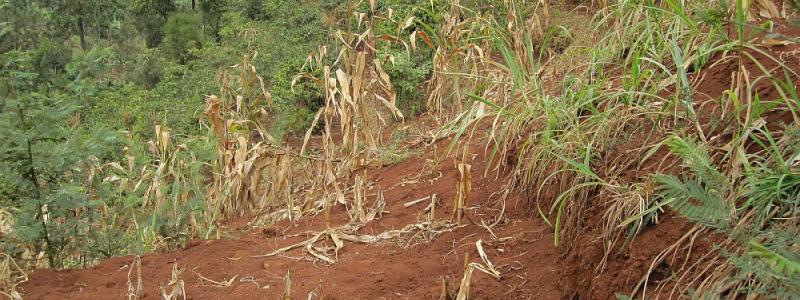
New method to assess the loss of productivity due to soil degradation
There is compelling evidence that soils are degrading because of problems such as erosion and soil depletion. However, nobody knows how serious the problem really is on the global level. Estimates of the rate of global soil degradation, the economic losses, and the impact on food security are extremely variable. This variability is due to various reasons such as lack of an objective definition of soil degradation and uncertainties in the underlying information. Consequently, soil degradation appears to be underemphasized on policy agendas and the investments required to safeguard future food security are unknown.
The Netherlands Environmental Assessment Agency (PBL) project on the Biodiversity, Ecosystem Services, and Development (Biodiversiteit, ecosysteemdiensten en ontwikkelingsvraagstukken) attempts to quantitatively understand interrelations between ecosystem degradation and economic development, particularly with regard to food- and water security for which they use models like IMAGE and GLOBIO.
ISRIC and PRI-WUR have developed a quantitative methodology that is more precise in relating changes in greenness to biomass production and the world-wide loss of productivity. This method incorporates global patterns and trends in satellite measurement of greenness (NDVI) and simulated biomass production using weather and soil data such as soil depth and soil water holding capacity. The loss of productivity is used as an indicator for soil degradation and can be applied globally with a high spatial resolution and can therefore contribute well to answer PBL’s questions.
The assessment of the impacts of soil degradation on biomass productivity is not straightforward. It needs an accurate understanding of soil processes in relation to climate, plant growth, land use, and abrupt events such as fires. It also needs insight into the amount of biomass increase due to the global increase in nitrate deposition and atmospheric carbon dioxide.
Uncertainty and sensitivity of the method have been analyzed; we are also extending the method with non-climate related causes of changes in land productivity. We are now verifying the preliminary results.